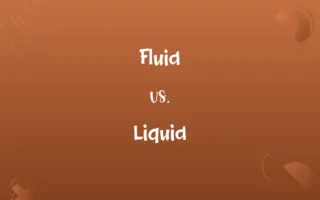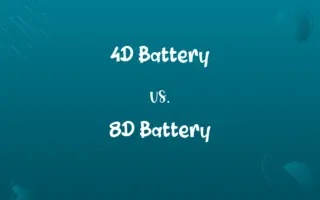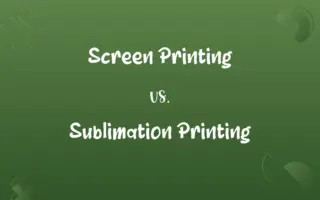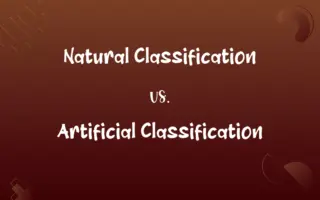Titrant vs. Analyte: Know the Difference

By Shumaila Saeed || Updated on December 25, 2023
A titrant is a solution of known concentration used in titration, while an analyte is the substance being analyzed or measured in the titration process.
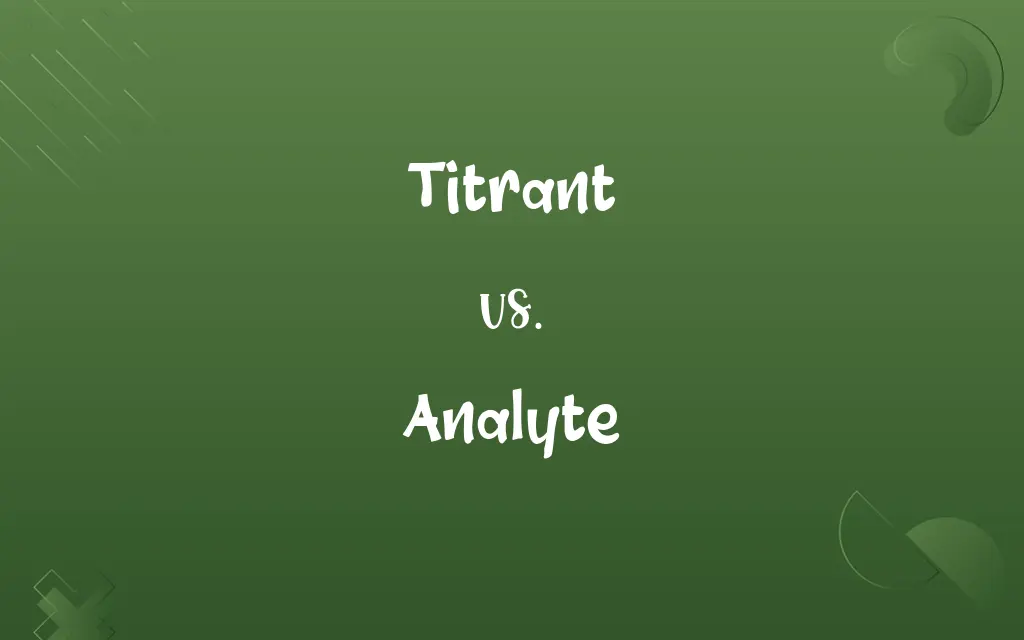
Key Differences
The titrant in a titration process is a solution with a known concentration used to react with the analyte. The analyte is the substance whose concentration or presence is being determined through titration.
Shumaila Saeed
Dec 01, 2023
Titrants are carefully prepared to ensure their concentration is accurate for precise measurements. Analytes are the specific substances in a sample being tested, which can be a solid, liquid, or gas.
Shumaila Saeed
Dec 01, 2023
In titration, the volume of titrant needed to react completely with the analyte is measured. The analyte's reaction with the titrant allows for the determination of its concentration or properties.
Shumaila Saeed
Dec 01, 2023
Titrants are selected based on their ability to react predictably with the analyte. Analytes vary greatly in nature, requiring different types of titrants for accurate analysis.
Shumaila Saeed
Dec 01, 2023
The interaction between titrant and analyte in titration leads to a quantifiable change, often indicated by a color change. The nature of the analyte determines the type of titration method used and the choice of titrant.
Shumaila Saeed
Dec 01, 2023
ADVERTISEMENT
Comparison Chart
Definition
A known concentration solution used in titration
The substance being analyzed or measured in titration
Shumaila Saeed
Dec 01, 2023
Role in Titration
Reacts with the analyte to measure concentration
The subject of the concentration or property measurement
Shumaila Saeed
Dec 01, 2023
Preparation
Prepared with a specific, known concentration
Can be in various forms (solid, liquid, gas) and concentrations
Shumaila Saeed
Dec 01, 2023
Measurement Focus
Volume used in titration is measured
Reaction with titrant determines concentration/properties
Shumaila Saeed
Dec 01, 2023
Selection Criteria
Chosen based on ability to react with analyte
Nature determines the titration method and titrant used
Shumaila Saeed
Dec 01, 2023
ADVERTISEMENT
Titrant and Analyte Definitions
Titrant
A chemical whose volume is precisely measured in analysis.
A standardized titrant was used for accurate measurement.
Shumaila Saeed
Dec 01, 2023
Analyte
The target of analysis in a chemical reaction.
Detecting the purity of the analyte was crucial for the study.
Shumaila Saeed
Dec 01, 2023
Titrant
A solution of known concentration used in titration.
The acid was the titrant in the titration of the base.
Shumaila Saeed
Dec 01, 2023
Analyte
The substance whose concentration is determined in titration.
In this experiment, the glucose solution was the analyte.
Shumaila Saeed
Dec 01, 2023
Titrant
A reagent added to cause and quantify a reaction.
Sodium hydroxide served as the titrant in the acid-base titration.
Shumaila Saeed
Dec 01, 2023
ADVERTISEMENT
Analyte
The focus of quantitative and qualitative analysis.
The analyte's properties were studied using various techniques.
Shumaila Saeed
Dec 01, 2023
Titrant
A reagent used to determine the unknown concentration of an analyte.
The titrant's volume was recorded until the endpoint was reached.
Shumaila Saeed
Dec 01, 2023
Analyte
A component in a sample undergoing chemical analysis.
The analyte reacted with the titrant, indicating its presence.
Shumaila Saeed
Dec 01, 2023
Titrant
An integral component of volumetric analysis.
The titrant's concentration was key to calculating the result.
Shumaila Saeed
Dec 01, 2023
Analyte
The substance being tested in a chemical procedure.
The analyte's concentration was found through careful titration.
Shumaila Saeed
Dec 01, 2023
Titrant
A substance, such as a solution, of known concentration used in titration.
Shumaila Saeed
Oct 19, 2023
Analyte
A substance or sample being analyzed, usually by means of a laboratory procedure or test.
Shumaila Saeed
Oct 19, 2023
Titrant
(analytical chemistry) The reagent of known concentration and volume used in titrations.
Shumaila Saeed
Oct 19, 2023
Repeatedly Asked Queries
How is the concentration of a titrant determined?
The concentration of a titrant is determined through standardization against a primary standard.
Shumaila Saeed
Dec 01, 2023
How is the analyte chosen for a titration?
The choice of analyte depends on the aim of the analysis and the nature of the sample.
Shumaila Saeed
Dec 01, 2023
What is the role of a titrant in titration?
The titrant's role is to react with the analyte to allow measurement of the analyte's concentration or properties.
Shumaila Saeed
Dec 01, 2023
Why is the accurate preparation of a titrant important?
Accurate preparation of a titrant ensures precise and reliable titration results.
Shumaila Saeed
Dec 01, 2023
How do you measure the amount of titrant used?
The amount of titrant used is measured by recording the volume added to reach the titration's endpoint.
Shumaila Saeed
Dec 01, 2023
How do you standardize a titrant?
Titrant is standardized by reacting it with a known amount of a primary standard and calculating its concentration.
Shumaila Saeed
Dec 01, 2023
What is a titrant in chemistry?
A titrant is a solution of known concentration used in titration to determine the concentration of an analyte.
Shumaila Saeed
Dec 01, 2023
Can an analyte be a gas?
Yes, an analyte can be in any physical state: solid, liquid, or gas.
Shumaila Saeed
Dec 01, 2023
What determines the choice of titrant in a titration?
The choice of titrant is based on its ability to react predictably and measurably with the analyte.
Shumaila Saeed
Dec 01, 2023
What does analyte mean in a titration process?
An analyte is the substance being analyzed or measured in the titration.
Shumaila Saeed
Dec 01, 2023
Can the same analyte be used in different types of titration?
Yes, depending on the analyte's properties, it can be analyzed using different titration methods.
Shumaila Saeed
Dec 01, 2023
Can titrants be acids or bases?
Yes, titrants can be either acids or bases, depending on the type of titration being performed.
Shumaila Saeed
Dec 01, 2023
What is the significance of the titrant's known concentration?
The known concentration of a titrant is crucial for calculating the analyte's concentration accurately.
Shumaila Saeed
Dec 01, 2023
Is the endpoint of titration always a color change?
Not always; the endpoint can be indicated by a color change, pH change, or other measurable signals.
Shumaila Saeed
Dec 01, 2023
Can environmental factors affect the titration of an analyte?
Yes, factors like temperature and humidity can affect titration, so controlled conditions are important for accuracy.
Shumaila Saeed
Dec 01, 2023
Can an analyte be a mixture of substances?
Yes, an analyte can be a single substance or a mixture of substances.
Shumaila Saeed
Dec 01, 2023
Are analytes always dissolved in a solution for titration?
While often dissolved in a solution, analytes can also be in other forms depending on the analysis method.
Shumaila Saeed
Dec 01, 2023
How do you ensure the accuracy of titrant volume measurement?
Accurate measurement of titrant volume involves using calibrated burettes and precise technique.
Shumaila Saeed
Dec 01, 2023
Can titration measure both qualitative and quantitative properties of an analyte?
Titration is primarily used for quantitative analysis, but it can provide qualitative insights based on the reaction type.
Shumaila Saeed
Dec 01, 2023
What factors affect the choice of analyte in an experiment?
The choice of analyte is influenced by the specific objectives of the experiment and the nature of the sample.
Shumaila Saeed
Dec 01, 2023
Share this page
Link for your blog / website
HTML
Link to share via messenger
About Author
Written by
Shumaila SaeedShumaila Saeed, an expert content creator with 6 years of experience, specializes in distilling complex topics into easily digestible comparisons, shining a light on the nuances that both inform and educate readers with clarity and accuracy.



































